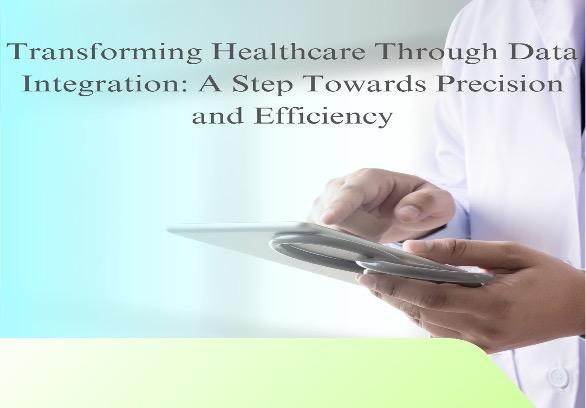
The delivery of patient care is being completely transformed by healthcare data integrationwhich turns disjointed systems into unified networks that increase productivity and results. Healthcare technology specialist Chandra Sagili discusses the developments that are changing the sector and their significant effects on healthcare delivery.
As per his research, the growing healthcare data, fueled by medical imaging, electronic health records (EHRs), wearable devices, and laboratory systems, creates both opportunities and concerns. He also says that hospitals currently manage an average of 50 petabytes of data per year, with each patient record including hundreds of data pieces. However, fragmented systems and data silos frequently impede the flow of important information, resulting in billions of dollars in inefficiency. EHRs, which serve as the foundation of healthcare infrastructure, can only be fully utilized when they are smoothly connected across several platforms.
Integration Challenges
Data integration is no easy task, requiring technology innovation, organizational commitment, and regulatory compliance. Inconsistent data formats, old legacy systems, and incompatible proprietary software all provide substantial challenges. Despite developments like as the Fast Healthcare Interoperability Resources (FHIR) standard, only 15% of companies strictly follow these criteria. The cost of maintaining outdated systems, which frequently consumes more than 40% of IT budgets, emphasizes the need for modernization and interoperability.
Clinical observations
Integrated data systems are fueling a new era of clinical accuracy. Healthcare professionals improve diagnostic accuracy and treatment efficiency by combining data from several sources. Facilities using integrated systems report a 37% increase in diagnostic accuracy and a 73% decrease in drug mistakes. Advanced predictive analytics, based on real-time data, allow for the early identification of high-risk patients, with 84% accuracy in risk prediction. This proactive approach avoids important delays and ensures prompt interventions, hence saving lives.
Aside from therapeutic benefits, healthcare integration results in significant operational gains. Streamlined workflows and automation have decreased administrative responsibilities by 65%, allowing healthcare professionals to spend more time on patient care. In addition, redundant testing has been reduced by 34%, and patient wait times by 28%. These economies extend to resource management, resulting in better scheduling and equipment usage in high-demand sectors, including emergency rooms and surgical units. These operational changes save healthcare institutions millions of dollars each year.
The patient experience is likewise being transformed through data integration. Improved access to information and communication technologies has increased patient satisfaction, with 91.8% reporting better experiences. Also, in his research, he noted that automated reminders and real-time monitoring systems have helped to improve medication adherence and treatment compliance considerably. Moreover, mobile health applications and complete patient portals allow people to actively engage with their healthcare providers actively, leading to better health outcomes and more personalized care.
Thus, successful integration necessitates a careful mix of technical competence and organizational readiness. Standardizing data formats and implementing scalable architectures are critical for system interoperability, cost savings, and faster implementation deadlines. Strong security measures, such as enhanced access controls and real-time threat monitoring, secure sensitive patient data while also ensuring regulatory compliance. Organizational methods such as stakeholder involvement and workforce training are equally vital. Facilities that invest in continuous improvement frameworks see consistent increases in efficiency and care quality.
Despite the limitations, the benefits of integrating healthcare data far exceed the disadvantages. Integrated systems help healthcare companies to provide better, more coordinated care by reducing workflows, increasing diagnostic accuracy, and improving patient experiences. This journey toward integration involves not only technological improvement, but also a paradigm shift in healthcare delivery.
To summarize, the integration of healthcare data is altering the business by removing obstacles and enabling precision-driven care. As healthcare systems embrace this shift, they will be better prepared to meet the demands of modern medicine and enhance patient outcomes. Chandra Sagili’s work emphasizes the significance of emphasizing integration to ensure a future in which healthcare is not only more efficient, but also more effective and patient-centered.